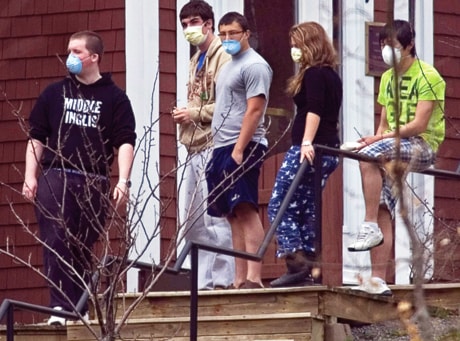Marga Cugnet thought she knew what she was in for when she came down with swine flu last October.
But the health administrator from Weyburn, Sask., said she was annoyed and somewhat dejected when the potent H1N1 virus left her with lingering symptoms that did not let up until earlier this month.
That’s five months of suffering through a hacking, post-flu cough and bouts of fatigue.
“I never went anywhere without having a bag of cough drops with me because I would just get into a coughing spell that wouldn’t stop,” said Cugnet, the 56-year-old vice-president of primary health with the Sun Country Health Region.
“I knew it could take months to go away, but I didn’t think it would last that long.”
Even though the global pandemic ceased making headlines weeks ago, the impact of the virus remains fresh in the minds of many Canadians who are just getting over an ailment that delivered a lasting one-two punch.
The Public Health Agency of Canada didn’t keep records on the number of Canadians who contracted mild cases of H1N1, mainly because most of them simply stayed home while recovering.
But Dr. Michael Gardam of the Ontario Agency for Health Protection and Promotion says blood tests on a sample group in that province suggested that just under 10 per cent of the population was infected in the first wave.
“The second wave was two to three times larger than the first wave, so 30 per cent total is likely reasonable,” said Gardam, the agency’s director of infectious diseases prevention and control.
These numbers are similar to estimates from other developed countries, including the United States and the United Kingdom, he said.
Since April 2009, when the first cases were identified in North America, the Public Health Agency of Canada says 424 Canadians died after contracting the virus and another 8,221 have been hospitalized — 1,472 of them admitted to intensive care.
The infection rate peaked in early November, but there’s plenty of anecdotal evidence to suggest H1N1 kept tormenting the country well into 2010.
“Sometimes it takes weeks to a couple of months for people to get ... back on their feet,” said Gardam.
The vast majority of those infected with H1N1 endure what the medical community describes as “mild” symptoms lasting for about a week to 10 days, including a fever, chills, headache, sore throat, runny nose, muscle aches and general tiredness.
Cugnet said she had never been so sick.
“My husband said, ‘You never looked at your BlackBerry for six days. I thought you were dying.’ ”
Gardam said a dry, persistent cough and fatigue are common complaints following respiratory tract infections, including seasonal flu.
The difference with H1N1 is that it mainly affected a large segment of the population that is not used to getting seriously ill during flu season.
“We had an otherwise young and healthy population really getting hit quite hard with this,” said Gardam. “Unfortunately, this is the age group that thinks they are pretty much immune to everything. ... That’s the main reason why governments were pushing the vaccine.”
A recent study found that H1N1 landed a higher proportion of Canadians in intensive care units than seasonal flu, and the seriously ill victims were also younger than average. The median age for patients hospitalized with H1N1 was 28, compared to 71 for people admitted for seasonal influenza or flu-related pneumonia.
There are no comparable statistics for those who suffered from mild symptoms.
Dr. Todd Hatchette, director of virology and immunology at the Queen Elizabeth II Health Science Centre in Halifax, said a nagging cough is the result of recently inflamed airways that are slow to heal.
“It almost triggers a bit of temporary asthma,” he said. “Your body is hyperactive to getting narrowed airways. ... It’s your body’s own reaction to itself.”
Doctors sometimes prescribe inhalers or oral steroids to open the airways.
Cugnet said she didn’t take any medication.
“I just toughed it out,” she said. “It’s a nasty virus that takes a long time for your body to get rid of.”
Swine flu is expected to return in the fall as the dominant influenza strain, a pattern witnessed after previous pandemics.
But the impact is expected to be minimal because of the number of Canadians who either got the flu or were vaccinated.
